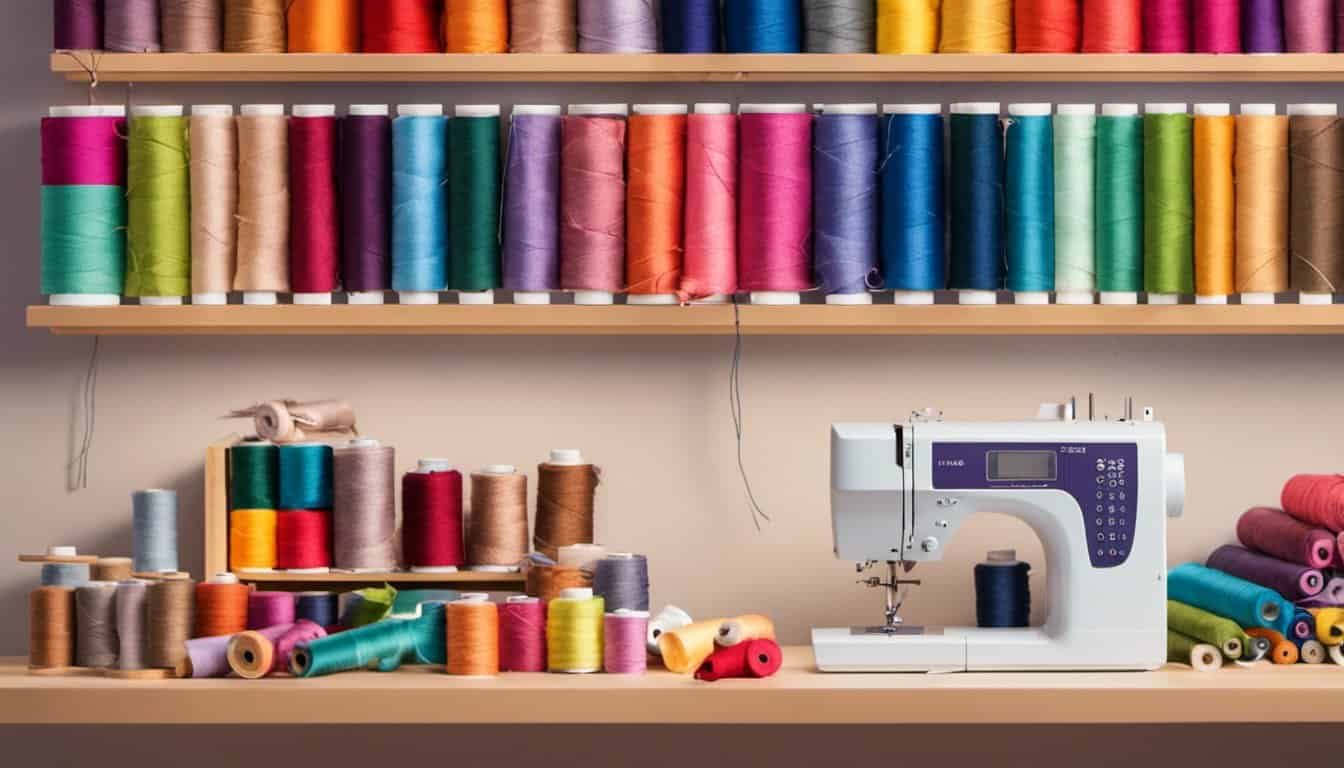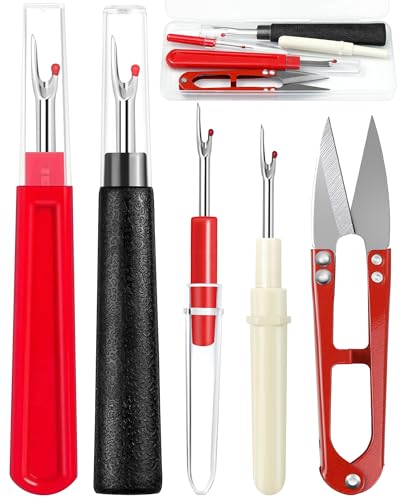Diving into the world of sewing can be exhilarating, especially when you’re ready to take your projects to the next level. One tool that often makes a significant difference is the serger. But with so many options out there, finding a budget-friendly model for home use can be a challenge.
I’ve spent time testing various sergers that won’t break the bank to help you make an informed decision. Whether you’re a beginner or looking to upgrade your setup, the right serger can enhance your sewing experience without emptying your wallet.
Overview Of Budget Sergers For Home Use
Budget sergers provide essential features for home sewers without breaking the bank. They offer multiple threads, various stitch options, and adjustable settings to handle different fabric types. These machines enable clean seams, professional finishes, and efficient production of garments and crafts.
When selecting a budget serger, consider the following key aspects:
- Number of Threads: Most budget sergers use 3 or 4 threads. Three-thread models handle basic seams, while four-thread sergers add a rolled hem option.
- Stitch Options: Look for adjustable stitch width and length to accommodate different project needs. Some models include differential feed for stretchy or delicate fabrics.
- Ease of Use: User-friendly features like color-coded threading systems, simple tension adjustments, and easy maintenance enhance the sewing experience.
- Durability: Sturdy construction and reliable performance ensure the serger can handle frequent use without issues.
- Price Range: Affordable sergers typically range from $200 to $500, offering a balance between functionality and cost.
Comparison of Popular Budget Sergers
| Model | Threads | Stitch Options | Price (USD) | Notable Features |
|---|---|---|---|---|
| Brother 1034D | 3 | Overlock, rolled hem | $300 | Easy threading system |
| Singer 14CG754 | 4 | Overlock, flatlock | $400 | Adjustable differential feed |
| Janome MOD-893HD | 3 | Overlock | $250 | Lightweight and compact design |
| Juki MO654DE | 4 | Overlock, rolled hem | $350 | Durable metal frame |
These models represent reliable options for home use, offering essential serging functions at various price points. By evaluating the number of threads, stitch options, ease of use, durability, and price, you can find a budget serger that meets your sewing needs effectively.
Key Features To Consider
When selecting a budget serger for home use, focusing on essential features ensures you get the best value and performance.
Stitching Capabilities
Budget sergers typically offer 3 or 4-thread options. A 3-thread serger suits basic seams and finishes, while a 4-thread serger provides rolled hems and more durable seams. Look for models that support multiple stitch types, such as flatlock, overlock, and rolled hem, to handle various fabric needs.
Ease Of Use
User-friendly sergers feature intuitive controls and clear threading paths. Adjustable tension settings allow customization for different fabrics. Built-in guides and color-coded threads simplify setup and reduce threading errors, making your sewing projects smoother and more efficient.
Durability
Sturdy construction extends the lifespan of a serger. Models with metal frame components resist wear and tear better than plastic parts. Reliable brands like Brother and Janome offer budget sergers known for their durability, ensuring consistent performance over time.
Example Comparison of Budget Sergers
| Feature | Brother Model A | Singer Model B | Janome Model C | Juki Model D |
|---|---|---|---|---|
| Threads | 4 | 3 | 4 | 3 |
| Stitch Types | Overlock, Rolled Hem | Overlock | Flatlock, Overlock | Overlock, Decorative |
| Ease of Use | High | Medium | High | Medium |
| Durability | Metal Frame | Plastic Components | Metal Frame | Metal Frame |
| Price Range ($) | 250 | 200 | 300 | 400 |
Selecting the right serger involves balancing stitching capabilities, ease of use, and durability to match your sewing projects and budget.
Top Budget Sergers On The Market
Finding a reliable serger without breaking the bank is possible. Here are my top picks for budget sergers that deliver quality and performance.
Brother 1034D Serger
The Brother 1034D stands out with its 3-thread construction, perfect for basic seams and overlocking. It features adjustable stitch width and length, allowing customization for different fabrics. Users appreciate its easy threading system and durable metal frame, which ensures longevity. This model operates quietly, making it ideal for home use. Priced around $300, it offers excellent value for beginners and seasoned sewers alike.
Singer 14T968DC Serger
The Singer 14T968DC offers a versatile 4-thread setup, enabling rolled hems and strong, professional finishes. It includes differential feed for handling various fabric types, from knit to heavy denim. The adjustable tension controls provide precision, while the color-coded threading guides simplify setup. Its robust construction and reliable performance make it a favorite among budget-conscious sewists. Available for approximately $350, it balances functionality with affordability.
Janome 8002D Serger
The Janome 8002D features a 3-thread system suitable for efficient edge finishing and seam reinforcement. It boasts a user-friendly interface with adjustable stitch options and tension settings, catering to both beginners and experienced users. The open-loop design allows for easy troubleshooting and maintenance. Known for its quiet operation and sturdy build, the Janome 8002D is a dependable choice for home sewing projects. It is typically priced around $280, making it a competitive option in the budget serger market.

Pros And Cons Of Budget Sergers
Pros
- Affordability: Budget sergers range between $200 and $500, making them accessible for hobbyists and beginners.
- Essential Features: Offer 3 or 4-thread options, multiple stitch types, and adjustable settings suitable for various fabrics.
- Ease of Use: Include user-friendly interfaces with intuitive controls and color-coded threading guides, simplifying setup and operation.
- Compact Design: Lightweight models save space in home sewing areas, ideal for small workspaces.
- Versatility: Capable of handling basic seams, rolled hems, and durable seams, catering to different sewing projects.
Cons
- Limited Advanced Features: Lack specialized stitches and advanced differential feeding found in higher-end models.
- Durability Concerns: Often constructed with more plastic parts, which may wear out faster compared to metal-frame sergers.
- Thread Capacity: Primarily 3-thread models restrict seam strength and versatility compared to 4-thread options.
- Performance Limitations: May struggle with heavy fabrics or multiple layers, affecting the quality of complex projects.
- Maintenance Needs: Require more frequent cleaning and adjustments to maintain optimal performance.
Comparison Table
| Feature | Pros | Cons |
|---|---|---|
| Price Range | $200 – $500 accessible for many | Limited budget for additional features |
| Thread Options | 3 or 4-thread versatility | Mostly 3-thread restricts some seam types |
| Stitch Types | Multiple essential stitches | Fewer specialized stitches available |
| Ease of Use | Intuitive controls, color-coded guides | Basic interfaces may lack advanced settings |
| Durability | Lightweight and compact designs | More plastic parts may reduce longevity |
| Fabric Handling | Suitable for various fabric types | Struggles with heavy or multiple layers |
| Maintenance | Simple mechanisms easy to clean | Requires frequent upkeep for best performance |
How To Choose The Right Serger For Your Home
Selecting the right serger for your home involves evaluating several key factors to match your sewing needs and budget.
Determine Your Sewing Requirements
Identify the types of projects you plan to undertake. Basic seams require a 3-thread serger, suitable for garments and simple hems. For more complex tasks like rolled hems, overlocking, or working with heavy fabrics, a 4-thread serger offers greater versatility and durability.
Consider Thread Capacity
Evaluate the thread capacity based on your projects. 3-thread sergers handle basic seams efficiently, while 4-thread models provide additional stitch options and strength. Ensure the serger supports the number of threads you frequently use to avoid limitations during your projects.
Assess Ease of Use
Choose a serger with an intuitive interface and simple threading mechanisms. Features like color-coded threading guides and quick-set tension controls streamline the sewing process. User-friendly designs reduce setup time and minimize errors, especially important for beginners.
Evaluate Durability and Build Quality
Opt for models with a metal frame for enhanced durability and stability during operation. Ensure the serger components are robust and reliable, capable of withstanding regular use without performance issues. A sturdy build contributes to the longevity of your serger, providing consistent results over time.
Compare Price and Features
« You Won’t Believe the Best Irons for Sewing in 2025 – Ultimate Reviews
Top 10 Best Fabric Markers for Pattern Tracing You Can’t Live Without »
Set a budget between $200 to $500 and compare sergers within this range. Prioritize essential features such as adjustable stitch settings, differential feed, and various stitch options. Balancing cost with functionality ensures you invest in a serger that meets your needs without overspending.
Review Brand Reputation and Support
Select sergers from reputable brands like Brother, Singer, Janome, and Juki known for quality and customer support. Research user reviews and professional assessments to gauge performance and reliability. Strong brand support ensures access to replacement parts and technical assistance when needed.
Test for Noise Level and Footprint
Consider the noise level and footprint of the serger, especially if you have a limited workspace or prefer a quieter sewing environment. Models like the Janome 8002D offer quiet operation and a compact design, making them suitable for home use without disrupting your space.
Examine Warranty and Customer Service
Review the warranty terms and customer service options provided by the manufacturer. A comprehensive warranty and responsive customer service offer peace of mind and support in case of any issues with your serger.
Utilize Comparison Tables
Refer to comparison tables to evaluate specific models based on thread options, stitch types, ease of use, durability, and price. Tables provide a clear overview, helping you balance your requirements with available options efficiently.

| Feature | Brother 1034D | Singer 14T968DC | Janome 8002D |
|---|---|---|---|
| Threads | 3-thread | 4-thread | 3-thread |
| Stitch Types | Adjustable | Differential Feed | Rolled Hems |
| Ease of Use | User-friendly | Color-coded Guides | Intuitive Interface |
| Durability | Metal Frame | Sturdy Construction | Quiet Operation |
| Price | ~$300 | ~$350 | ~$280 |
By systematically evaluating these factors, you can choose a serger that aligns with your sewing projects, budget, and home setup effectively.
Conclusion
Finding a budget serger that suits my home projects was a game changer. It’s incredible how these machines can enhance the quality of your sewing without breaking the bank. I feel more confident tackling a variety of fabrics and styles now.
Investing in the right serger has made my sewing experience smoother and more enjoyable. If you’re considering adding a serger to your setup explore the options and choose one that matches your needs. Happy sewing!

















